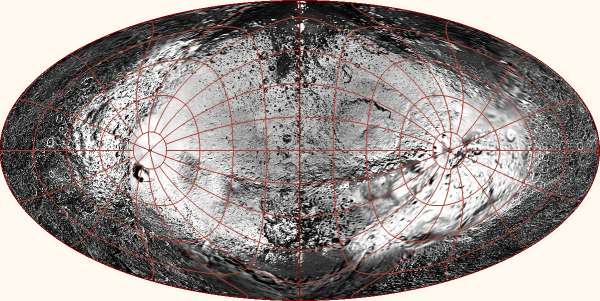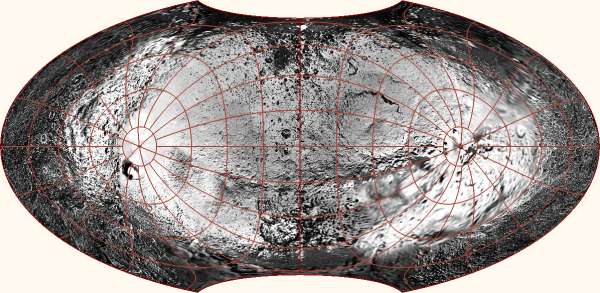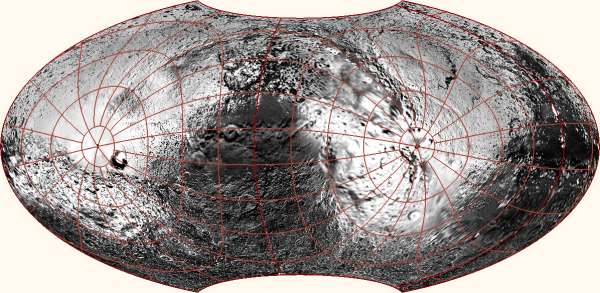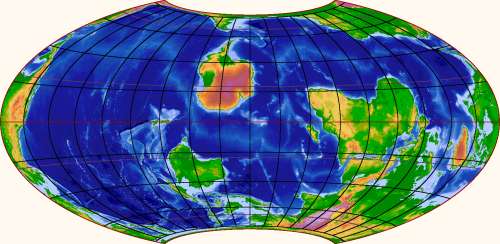In the beginning there was no copyright.
Books were written (and music composed) by men of independent means, or by talented men sponsored by princes and nobles, or by scholars or clerics who were fortunate enough to have the power to decide that writing a treatise on this or that just happened to be part of their own duties. Somehow world literature got along.
Then somebody invented the printing press. The press, together with other technological advances during the 1400s, made mass production of printed books a feasible alternative to hand copying of manuscripts. And this changed everything.
First and foremost, printing books is a capital-intensive undertaking. In addition to the cost of the printing press and its various paraphernalia, setting type by hand is slow and costly. It makes sense to analyze the typesetting cost as capital rather than labor, because once the type is set, you can print copies of the book very cheaply. You can make your customers pay quite a bit more than your marginal cost for each item you sell, which will allow you to break even in the end. And the customers are not going to care whether you've broken even or not, so you can still charge the high price after you break even. If there's enough demand for the title, printing books can be quite a profitable business.
Now, printers who choose to print books that turn out to be popular become rich; printers who choose badly do not. If we assume that the popularity of one title over another is due to some special talent or effort expended by its author, it begins to look quite unfair that the printer should become rich because of them and the author get nothing. That is what the first copyright laws set out to remedy, after the changes wrought by Gutenberg had had a few centuries to sink in.
Actually, it was a bit more complex than that. Publishers – who around this time were emerging as a separate trade of funders and distributors of books – also benefited from copyright: Regulation of who could print what reduced the risk that another publisher would start printing the same book, leading to a price war (which would lose money for both printers as the the price per copy dropped towards the marginal production cost). But the moral justification for having a copyright system in the first place was that it let authors get a cut from the profit when the quality of their works became the foundation of somebody else's business.
During those same centuries, medieval religious drama gave way to professional theatre, and instead of semi-improvised lines that changed with time according to audience reactions and the actors' own wit, plays came to have written-down scripts authored by named playwrights. Theatre was now a business, and a company could make a profit with a good performance of a good play – and thanks to the printing press, the playwright need not be affiliated with the theatre company.
In music, partly in response to the demands of theatre, ensembles grew in size and complexity – beyond the point where the performance could be structured by oral agreements and remembered tunes. Music notation expanded to meet the needs of orchestrally scored music. Eventually the public concert where professional orchestras performed for paying audiences was invented. Having a good work by a recognized composer on the billboard certainly helped draw in those paying audiences.
Playwrights and composers must now suffer that not only could publishers make a business of printing their work, companies and orchestras could make a business of performing them. In response, copyright expanded to cover "public performances" in addition to simply the making of physical copies.
As I have insisted above, the moral purpose of copyright was still to save creators from the indignity of seeing somebody else build a profitable business upon their work without getting a share of the success themselves. But as a side benefit, creators who did create successes got an income source and the opportunity to quit their day jobs and create yet more successes. This benefits society as a whole. It was seen as an independent motive for copyright as early as 1787, when the drafters of the American constitution allowed for federal copyright legislation "to promote the Progress of Science and useful Arts".
Sound recordings were invented in the late 1800s and quickly integrated into the basic structure of copyright. They fit well there, because it requires specialized and expensive equipment to manufacture records, and large specific costs to prepare a recording for being mass produced – exactly the qualities that made copyright the right legal tool for printed books centuries earlier. As for books, creators of successful records have been able to quit their day job, sometimes spectacularly so.
Movies also got copyright. Again, production of film prints is a specialized commercial operation, and public performances is usually organized by businesses too. This fits the philosophical framework of copyright fairly well – though in comparison to a novel or a symphony, which are usually the work of an individual genius, creating a movie is quite a team effort. Copyright fairly easily let itself be extended too deal with large team efforts.
In each of these successful cases, copyright has felt like a right and just tool, because the activity being regulated – whether printing a book, performing an opera, stamping a record, or showing a movie – was naturally and necessarily a commercial undertaking. Done by a business. For a profit, which it is only reasonable to share with a creator.
Well, well, well. Guess what is not true anymore?
We see the underlying assumption break down most clearly for recorded music. For at least a decade there has been no practical reason why copies of sound recordings need to be made by a business rather than by private individuals. The technology is cheap and ubiquitous, and the shift in public perception of copyright has been quick and pervasive. Very few people today really feel that it is morally wrong to create an unlicensed copy of a commercially released song they like. Those of us who nevertheless refrain from doing so do it for the warm fuzzy righteous feeling of complying with the law even when the law is unreasonable.
Movies are not far behind music in this development. Many kinds of books still hold out, because people like the feeling of real bound paper books better than reading from a computer screen. But if print-on-demand hardware becomes ubiquitous enough that bound paper books are not made by specialized businesses anymore (or if really acceptable ebook readers emerge), I predict that the respect for copyright of books will go the same way as that for music. And, of course, already some kinds of non-fiction books are dying breeds, being replaced by free internet versions.
Music and movie publishers everywhere know all this, and are understandably all up in arms. Their response so far is threefold:
- Try to put the genie back into the bottle. Have copying technology outlawed or forcibly crippled. If this prevents amateur artists from creating their own works that may compete with commercial offerings, then so much the better.
If successful this would lead to a nightmare world, but I don't think our politicians are that stupid. We have Vernor Vinge, Cory Doctorow and the EFF to explain why this shouldn't succeed; overall they do it well enough that I think it won't.
- Lobby legislatures to introduce ever more draconian laws to enforce copyright. Hope that you can bludgeon people into following rules out of fear that they won't follow out of fairness.
At best, this is a short-term stopgap. At worst ... well, it doesn't really seem to have the desired effect out in the real world, does it? If anything it seems to reinforce the perception of copyright as an instrument of oppression, rather than a rule that works for the common good.
- Appeal to everybody's better nature such that we will all begin to think it is wrong to make private copies of music even if no business is involved. This is the "artists deserve compensation" argument, and it is very convincing on its face. It is also, I think, subtly flawed, and the main point of this essay is to explain what is wrong with it.
The hidden assumption of the argument is that the creator suffers some kind of moral wrong each time someone enjoys his work, and that the purpose of royalties is to compensate him for that wrong. But what is that wrong? It cannot really be the lack of opportunity to capitalize on the copyright, because the whole point of the argument is to motivate copyright in the first place. But stripped of that explanation, the assumption is simply stupid – creators want their work to be enjoyed, and are pleased when people do so. True, they also want to quit their day job, which requires that income can somehow be derived from the work, but it does not follow that this income has to be in the form of per-copy royalties. And wanting the conclusion to be true does not make the argument hang together.
I think all three responses are likely to fail in the end. Copyright is doomed. It may take decades, or even centuries, for it to die out completely, especially because it has been entrenched in international treaties which are very difficult to change. But die out it must, for it cannot persist in a world where copying is no longer expensive and complex.
This state of affairs creates a political obligation to think ahead. We still want want the world of tomorrow to be one where talented creators can quit their day job and create more. The challenge is to think up a system that does this and still respect the technological reality.
It is tempting to take as a starting point that creators should be rewarded in proportion to the enjoyment people derive from their work. But the trouble is that enjoyment is not easily quantified. In a way, the copyright system uses "number of copies" as a proxy for "amount of enjoyment", which works rather poorly. When making and keeping a copy is cheap and easy, people are likely to keep a copy of every work that they don't actively dislike, whether that work is one of sublime genius or merely passable.
There's a movement towards using "number of listenings/readings" as a proxy for amount of joy, such that if you want to read a book again you have to pay anew. This doesn't work well either. Many a time when I sit down to read a book, it proves to cause me no enjoyment at all and I conclude that the book is horrible. And when I reread a book it may not be because I enjoyed it the first time, but because I need to look up a dry fact about it.
I doubt a working calculus of joy can be developed. How about explicit public subsidies to outstanding creators, awarded by expert committee? That is already common in countries with languages that are perceived as too small for a national literature to flourish funded entirely by copyright, such as Danish. But I don't think it is attractive as a general solution; too much power is concentrated in the hands of the committee, and even with the best of intentions the committee cannot possibly have enough information to make a really informed choice.
Despair and accept that day jobs must be had? Most likely, music and literature would continue to exist – the equipment necessary to create either is within the reach of determined hobbyists. Movies wouldn't, however; it is mindbogglingly expensive to create a movie at the technical quality modern audiences expect. Can that be covered by the box office alone? Probably not in the long run, what with the increasing quality of home AV equipment. And a plan that means that movies cannot be made is not politically viable. Exit "despair".
I am left, for the time being, with no good proposed solution. But that does not make the problem go away. It is still there, whether we like it or not, and solving it before the death throes of copyright end should be high on the list for politicians concerned with culture.
![[My letter to RBS]](http://henning.makholm.net/blog/images/rbs12small.png)





 P.S. It just now occurs to me that
one of the symbols I use in
my hand-drawn sketches, a stylized tree meaning roughly "these
tracks are visibly abandoned; shrubs and small trees growing between
the rails", could easily be interpreted as a stylized mushroom cloud.
Good thing my notes did not fall into the hands of an alarmist
terrorist hunter. Except in 2007 I did foolishly forget a sketchpad in
a train (and lost several days' worth of sketches). Wonder what
happened to that ...
P.S. It just now occurs to me that
one of the symbols I use in
my hand-drawn sketches, a stylized tree meaning roughly "these
tracks are visibly abandoned; shrubs and small trees growing between
the rails", could easily be interpreted as a stylized mushroom cloud.
Good thing my notes did not fall into the hands of an alarmist
terrorist hunter. Except in 2007 I did foolishly forget a sketchpad in
a train (and lost several days' worth of sketches). Wonder what
happened to that ...










 Henning Makholm is a computer scientist and software developer living in Copenhagen, Denmark. Find out more about him on his
Henning Makholm is a computer scientist and software developer living in Copenhagen, Denmark. Find out more about him on his